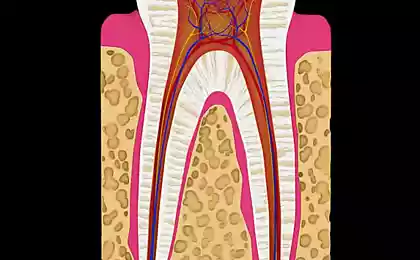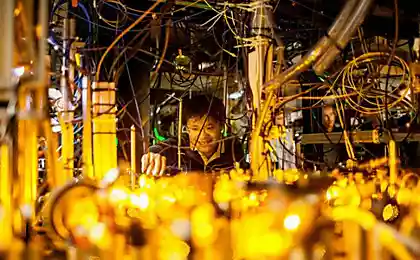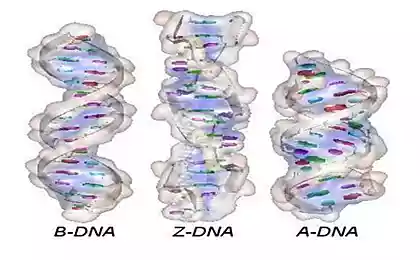17916
Bacteria under the microscope
Meet bacteria which account for 90 percent of live cells in the body. The human body is home to trillions of life forms, ranging from stem Escherichia coli E.coli, who use their three tail to move vigorously in us inside, and ending with Salmonella bacteria that cause food poisoning, but can happily live on our skin, without exerting any influence on us.
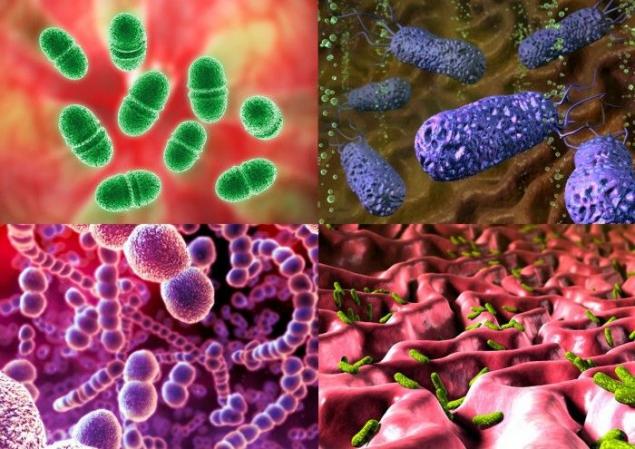
1. Computer-generated image of bacteria (blue and green) on human skin. Many types of bacteria found on human skin, particularly those associated with the secretions of the sweat glands and hair follicles. As a rule, they do not cause problems, although some of them can cause acne. Bacteria can usually become a problem only if they penetrate the skin, for example, through a wound or cut.

2. There are between 500 and 1000 different species of bacteria in each human body. They multiply, reaching the number of 100 trillion cells - about ten times more than human cells that make up one body. Computer image of Helicobacter Pylori bacteria in the stomach, associated with the occurrence of gastric ulcers and cancer.

3. Teacher Cork Institute of Technology, Dr. Roy Sleator, said: "Only the human intestine contains almost four and a half pounds of bacteria We are, in fact, only ten percent of the people - the rest is up different microbes." Computer image chains of bacteria Streptococcus pneumoniae pneumonia . This gram-positive bacteria oval, which are one of the causes of pneumonia. They can also cause dangerous infectious lung disease.

4. The fact that we are made up mostly of different bacteria can cause anxiety, but Dr. Slitordal understand that bacteria act for the benefit of us - and without them we would not have survived. "This bacterial and human interaction for the most part is symbiotic. In exchange for food and nutrition, bacteria help us with digestion, the formation of vitamins and help to strengthen our immune system In addition, they protect us from opportunistic infections - the so-called "bad bacteria", he says. Computer generated image of coliform bacteria in the intestines. They can cause bacterial diarrhea.

5. A conceptual image of a few cocci bacteria on the surface of cells.

6. ciliary rod-shaped bacterium. Typical rod-shaped bacteria include Escherichia coli and Salmonella.

7. Floating bacteria.

8. The obtained electron microscope image of Helicobacter Pylori.

9. Ciliated (with hairs) rod-shaped bacteria.
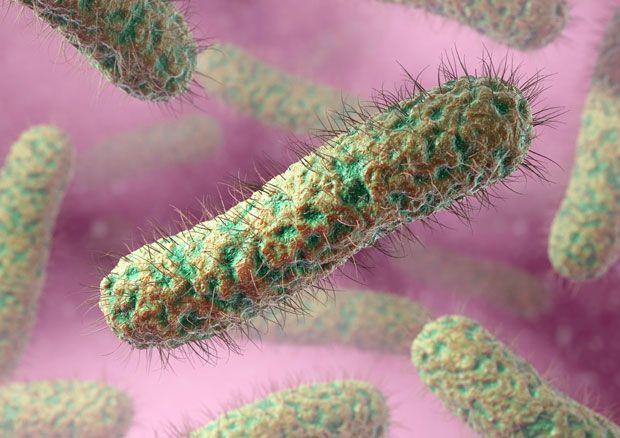
10. The bacteria Helicobacter Pylori.

11. Typical rod-shaped bacteria Escherichia coli and Salmonella bacteria, these bacteria have flagella (hair-like structures) on one end, which allow them to move.

12. The computer image of bacteria Enterococcus faecalis. The bacterium is one of the so-called superviruses which are resistant to antibiotics.

13. Computer image of Helicobacter pylori bacteria in the human stomach. They cause gastritis and is the most common cause of stomach ulcers. Can also become a cause of cancer of the stomach and cause stomach bleeding.

via Source

1. Computer-generated image of bacteria (blue and green) on human skin. Many types of bacteria found on human skin, particularly those associated with the secretions of the sweat glands and hair follicles. As a rule, they do not cause problems, although some of them can cause acne. Bacteria can usually become a problem only if they penetrate the skin, for example, through a wound or cut.

2. There are between 500 and 1000 different species of bacteria in each human body. They multiply, reaching the number of 100 trillion cells - about ten times more than human cells that make up one body. Computer image of Helicobacter Pylori bacteria in the stomach, associated with the occurrence of gastric ulcers and cancer.

3. Teacher Cork Institute of Technology, Dr. Roy Sleator, said: "Only the human intestine contains almost four and a half pounds of bacteria We are, in fact, only ten percent of the people - the rest is up different microbes." Computer image chains of bacteria Streptococcus pneumoniae pneumonia . This gram-positive bacteria oval, which are one of the causes of pneumonia. They can also cause dangerous infectious lung disease.

4. The fact that we are made up mostly of different bacteria can cause anxiety, but Dr. Slitordal understand that bacteria act for the benefit of us - and without them we would not have survived. "This bacterial and human interaction for the most part is symbiotic. In exchange for food and nutrition, bacteria help us with digestion, the formation of vitamins and help to strengthen our immune system In addition, they protect us from opportunistic infections - the so-called "bad bacteria", he says. Computer generated image of coliform bacteria in the intestines. They can cause bacterial diarrhea.

5. A conceptual image of a few cocci bacteria on the surface of cells.

6. ciliary rod-shaped bacterium. Typical rod-shaped bacteria include Escherichia coli and Salmonella.

7. Floating bacteria.

8. The obtained electron microscope image of Helicobacter Pylori.

9. Ciliated (with hairs) rod-shaped bacteria.

10. The bacteria Helicobacter Pylori.

11. Typical rod-shaped bacteria Escherichia coli and Salmonella bacteria, these bacteria have flagella (hair-like structures) on one end, which allow them to move.

12. The computer image of bacteria Enterococcus faecalis. The bacterium is one of the so-called superviruses which are resistant to antibiotics.

13. Computer image of Helicobacter pylori bacteria in the human stomach. They cause gastritis and is the most common cause of stomach ulcers. Can also become a cause of cancer of the stomach and cause stomach bleeding.

via Source






